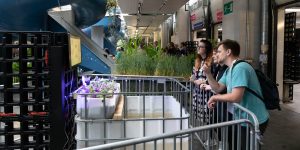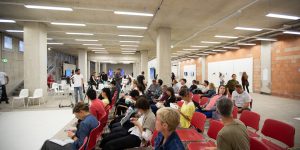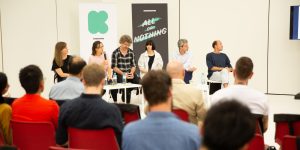science

TeleAgriCulture_Rhizomatic Bias
Julian Stadon (AU), Erik Overmeire (NL), Daniel Artamendi (ES), V2_ Lab for Unstable Media (NL)
What happens if biotopes start chatting to each other using social network communication models? TeleAgriCulture_Rhizomatic Bias aims to explore how bias grows in machine learning and intelligent systems. This artistic provocation points at the much larger problems we face when our emotional biases and social constructions affect the way artificial intelligent systems evolve and impact our lives.

Gallery Spaces Panel VI: Paradoxes and obstacles in maintaining and staging alive biomedia art
This panel with prominent protagonists involved in the field of biomedia art discusses the unprecedented challenges to stage, transport, conserve and collect art that appropriates and subverts the most diverse technologies of the life sciences. The shift from organic representation or simulation to actual biological manipulation results in technical, institutional, regulatory, legal, ethical, bureaucratic, philosophical and aesthetical issues with regards to museum infrastructures, the status of living organisms, tissues and GMOs, and their fragility when maintaining, conserving, re-enacting or shipping them. Such works at the threshold of microperformativity and necropolitics face undesired bacterial deterioration and contamination, and cultural institutions and collectors are still ill-equipped to deal with the subsequent issues.

Gallery Spaces Panel V: Artists & scientists – Exploring new forms of collaboration (Scientist in Residence Program)
Just as artists today are increasingly interested in science and technology, scientists and technologists are turning to the arts as a source of new perspectives and tools for communication. This trend requires new initiatives to establish better links between the worlds of art and science, as well as between cultural and research institutions. Through its Art&D labs, Gluon supports artist residencies in laboratories of companies, research institutes and universities. Through its Scientists in Residence programme, it encourages artists to open their studios to scientists and technologists. On the basis of their experiences in these programmes, the scientists of this panel will reflect on the following questions: To what extent can these interdisciplinary collaborations stimulate innovative ideas and projects of social relevance? What challenges do scientists have to face in working together with artists? And how can organizations help them achieve meaningful exchanges?


